With vast swaths of the country currently in the grips of what seems to be an interminable heat wave, countless cool flowing freestone trout streams have turned into something altogether different. Even freestone streams with strong cold water influences and spring creeks that normally remain temperature stable throughout the year have seen soaring temps with fish abandoning their normal feeding and holding lies in search of cold refuges. Most of us who fish know that when trout streams get too warm, the fishing goes downhill fast. Fish are either nowhere to be found or aren't actively feeding.
For streams that straddle the borderline between the temperatures at which trout thrive and those at which they suffer, it's possible to find fish that are actively feeding, but for which you shouldn't be fishing unless you intend to keep said fish. The trouble for many fisherman can be determining where to draw the line. When it comes to trout, how hot is too hot?
The upper limits of the temperature range within which trout will feed, grow and remain unstressed by thermal conditions varies by species, however not all that significantly. These upper limits — which may be as high as 80 degrees depending on the species — can be very misleading. These upper limits characterize thermal conditions under which trout that are otherwise unstressed will die should those thermal conditions persist for a certain period of time (typically 24-48 hours) — but they provide little to no information about how abnormally high water temperatures can affect a fish that is under respiratory and other forms of stress as a result of being hooked and played by an angler.
Warmer water contains less oxygen than colder water. As temperature rises and dissolved oxygen decreases, fish begin to experience stress. These stresses begin to set in well before the water temperature reaches lethal limits. For example, rainbow trout are said to be able to survive in temperatures up to and exceeding 77°F (24°C), but stop growing at 73°F (23° C). It stands to reason that a fish, one which is already oxygen stressed while positioned carefully in current that minimizes its energy use, will be dramatically more stressed after being hooked and attempting to fight its way to freedom. In fact, in many cases, a fish otherwise properly handled and released under thermally stressful conditions may be likely to not survive.
So how do you know when the conditions remain comfortable enough to fish your target stream without creating a lethal situation for its residents? Unfortunately, studies vary and there doesn't seem to be any one set of accepted limits. That said, there is a considerable consensus that all three major trout species (brook, brown and rainbow) begin to experience some level of stress at around 68°F (20°C), with that stress increasing rapidly as the temperature rises further. For brook trout, these limits are generally accepted to be a few degrees lower (some sources suggest as low as 65°). For many fishermen, 68°F (20°C) has become a round figure that represents the "don't fish" limit.
Of course these are merely guidelines. Water temperature is not the only determining factor of dissolved oxygen (speed of current also plays a factor, for example). Trout which spend extended periods of time living on these generally accepted thermal margins will likely have a greater tolerance outside these margins. However, 67°-70° represents a valuable limit outside of which — provided you don't know otherwise — trout should not be fished to.
On days when temperatures soar, and especially during extended periods of high temperatures, the catch and release fisherman should pay specific attention to stream temperatures throughout the stream he or she is hoping to fish. Play it safe—when temperatures in moving water hit or exceed 68°F (20°C), it's best to call it and return another day.





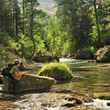
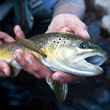
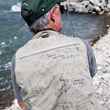
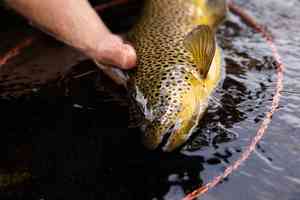

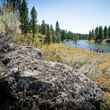
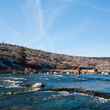


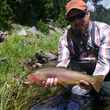




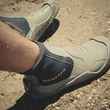





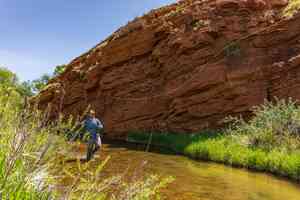


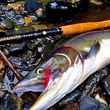
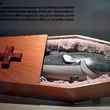
Comments
Hardtail60 replied on Permalink
Will use this as my rule of thumb. Nice bit of info.
Russell Bird replied on Permalink
The King River (NE Victoria)@ Whitfield is 4degrees cooler than most trout streams in the north east as it comes out of Lake William HovellHowever,last year after 8 days in a row above 40,fish floated.Sad to see. The King Valley Tourism Assoc. is currently undertaking major fish habitat reinstsatement (compliments of a government recreational fisheries grant)with the hoped outcome of re establishing deeper holes and sheltering spots for the fish.
George Semel replied on Permalink
Well for the last 40 years on my home waters, I use the 70 deg rule as the brick wall in my trout fishing, the last few years, I been using 65 deg as the limit, due to both water temps and water levels! During the Dog days I also discovered that there are plenty of carp to be fished for ( fresh water bonefish) along with large mouth bass and inshore salt water! It don't just has to be trout fishing during these warm summer spells! When to over night lows hover in the mid 60-70's plan on fishing for other types of fish! Oh and the carp is a great primer for fall steel head and salmon on the great lakes! I do a lot of my scouting for the coming deer season that starts in Sept with archery! Trout bums like myself needs some venison too- and well the hides go to the tanner and a lot of my friends gets good deer hair for well Trout Flies!
Anonymous replied on Permalink
We have a rule in Sweden that we go home if the temperature is above 55. The fish can't take the stress above that.
troutguy Colorado replied on Permalink
I wonder if the trout move upstream when water warms? In other words, do they migrate seasonally? In a stream I often fish, the water got low, warmed up to 78 deg. F. on June 29th. I walked the banks and could see into nearly every hole, down to the bottom and not one trout to be seen. I especially looked for very slow moving fish, sheltered on the bottom or in the shade but saw none. Needless to say, I didn't bother fishing. Upstream about 4 miles I would imagine the water's much colder, as it's closer to the source (tall mountains with melting snow).
Bob replied on Permalink
Absolutely!
Pages